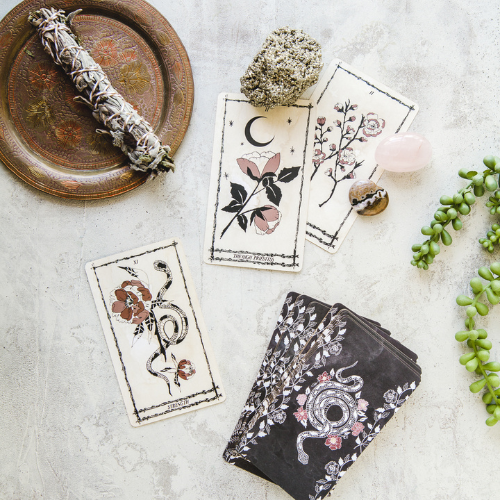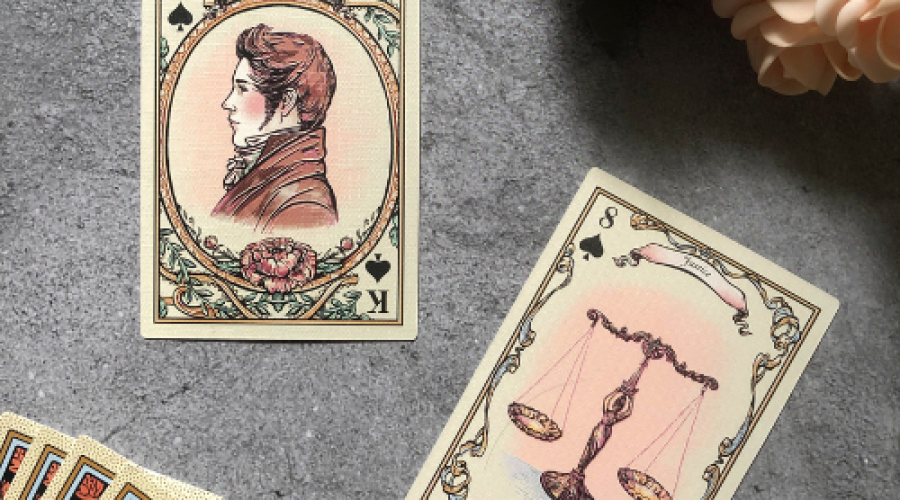Master the Language of Divinatory Card Readings
Unveiling the Language of Divinatory Card Readings
Interpreting cards is the heart of any successful divinatory card reading, whether you’re using Tarot cards, Lenormand cards, oracle cards, or any other divinatory deck. In this article, we’ll explore the essential steps and principles of interpreting cards effectively, enabling you to unlock the hidden messages within the cards and offer valuable insights to those seeking guidance. Cartomancy, which is the practice of divination through playing cards, serves as an intriguing and accessible gateway to the mystical art of card reading, You can also check the basic of cartomancy.
Here’s an overview of how Divinatory Card readings works:
1. Familiarize Yourself with the Deck:
Before diving into a card reading, take the time to familiarize yourself with the deck you’re using. Study the imagery, symbolism, and unique characteristics of each card. Understanding the cards’ meanings is the foundation of accurate interpretation.
2. Trust Your Intuition:
Intuition is a powerful tool in card interpretation. As you lay out the cards and focus on the question or intention, allow your intuition to guide you. Pay attention to any immediate impressions, emotions, or thoughts that arise as you view the cards.
3. Consider Card Positions:
In many divinatory card readings, the positions of the cards hold significance. Each position may represent a different aspect of the question or the individual’s life. Understanding the role of each card within its position can provide context for interpretation.
4. Analyze Symbolism:
Examine the symbols, colors, and imagery on the cards. These visual elements often convey important messages. For example, a card featuring water may represent emotions and intuition, while a card with a mountain could symbolize challenges or obstacles.
5. Notice Card Relationships:
Pay attention to how the divinatory card readings interact with each other. Cards that appear together in a spread may influence or modify each other’s meanings. Positive or negative relationships between cards can reveal nuances in the reading.
6. Trust Card Reversals:
In some Divinatory card readings, cards may appear upside down or in reverse. These reversals can indicate blocked energy, delays, or a need to pay special attention to the card’s reversed meaning. Some readers choose not to use reversals, while others find them valuable.

7. Connect with the Question:
Always keep the querent’s question or intention in mind as you interpret the cards. The cards should provide relevant insights and guidance related to the question posed. Get a free 3 card reading online to get an insight now
8. Practice and Study:
Interpreting divinatory card readings is a skill that improves with practice and study. Regularly conduct readings for yourself and others to refine your abilities. Additionally, consider exploring the mystical world of divinatory card decks, books, or resources that delve into the specifics of card interpretation for your chosen deck.
Conclusion: Mastery of the Cards
Interpreting cards is both an art and a science, and it’s a skill that can be cultivated over time. As you continue to work with divinatory card decks, you’ll develop a deeper understanding of their symbolism and meanings.
Trust in your intuition, stay connected to the querent’s question, and approach each reading with an open heart and mind. With practice and dedication, you can become a skilled card interpreter, offering valuable guidance and insights to those seeking clarity and direction in their lives.
Questions to ask an astrologer in UK : In your quest for answers, approach best african astrologers in UK with an open heart and mind, ready to receive powerful wisdom and guidance they provide. Your spiritual journey is a profound opportunity to gain clarity, embrace your potential, and navigate life’s intricacies with newfound purpose.



